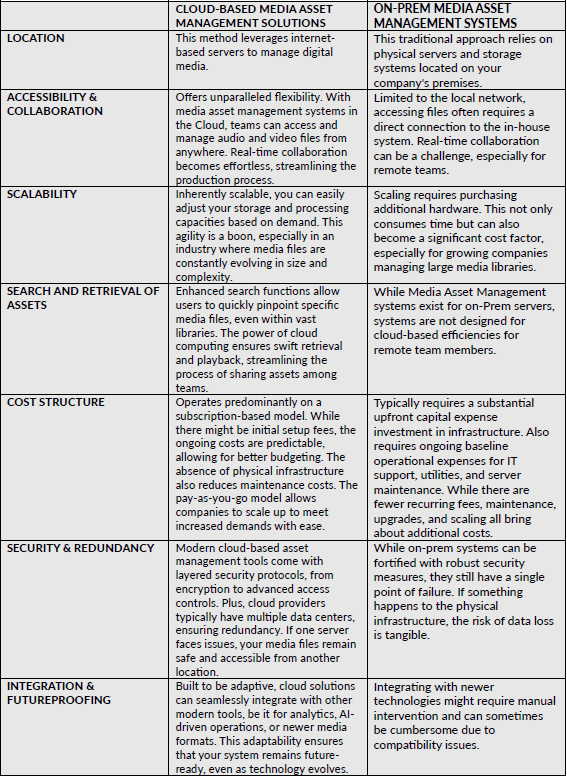In the dynamic landscape of media production, how assets are stored and managed plays a crucial role in efficiency, collaboration, and overall output quality. Historically, studios purchased file servers for media asset management. These high-end systems relied on expensive hardware and required extensive IT support. The high capital expense required created a barrier of entry for smaller studios and independent in-house video production teams.
Cloud-based media asset management became a reality as technology improved with faster bandwidth and affordable access to offsite data centers. Initially, these early cloud-based systems functioned like remote file servers, but innovations have enhanced cloud-based media asset management capabilities. Integration with editing software, automation, enhanced metadata, and workflow orchestrations have transformed video production, postproduction, and distribution. Many studios with expensive On-Prem systems are beginning to integrate cloud-based MAM in what is referred to as hybrid systems.
The Difference Between On-Prem and in The Cloud MAM
This article will focus on the differences between on-premises (on-prem) and cloud media asset management. Both come with their strengths and challenges. Which fits the bill for managing video, audio, and other digital media assets? Let’s dive deep.

In Conclusion
The debate between on-prem and cloud media asset management has no one-size-fits-all answer. For businesses that prioritize in-house control, have vast existing infrastructure, and can manage scaling and maintenance, on-prem or hybrid solutions may still meet their needs.
However, cloud-based solutions have opened the industry to small and medium-sized studios and in-house production companies. With many creators working remotely, these enterprises can carve out a slice of the video production and film market with cloud-based solutions. They gain an edge with these new flexible, scalable, affordable solutions that foster effective collaboration.
